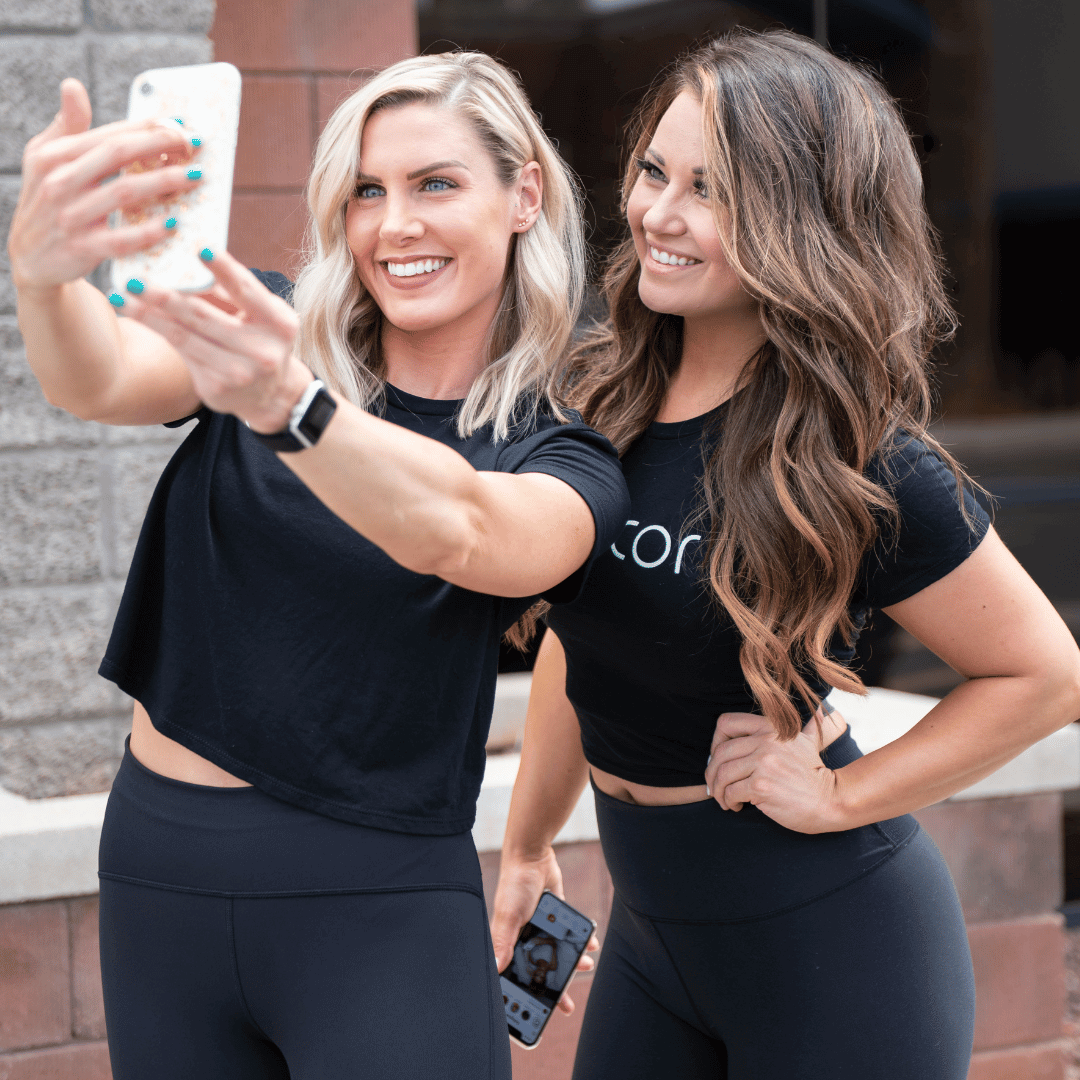Study of Low Level Laser Therapy (LLLT) for Body Contouring
The purpose of this study is to determine whether infrared diode low level laser therapy is effective for body contouring of the waist, hips and thighs.
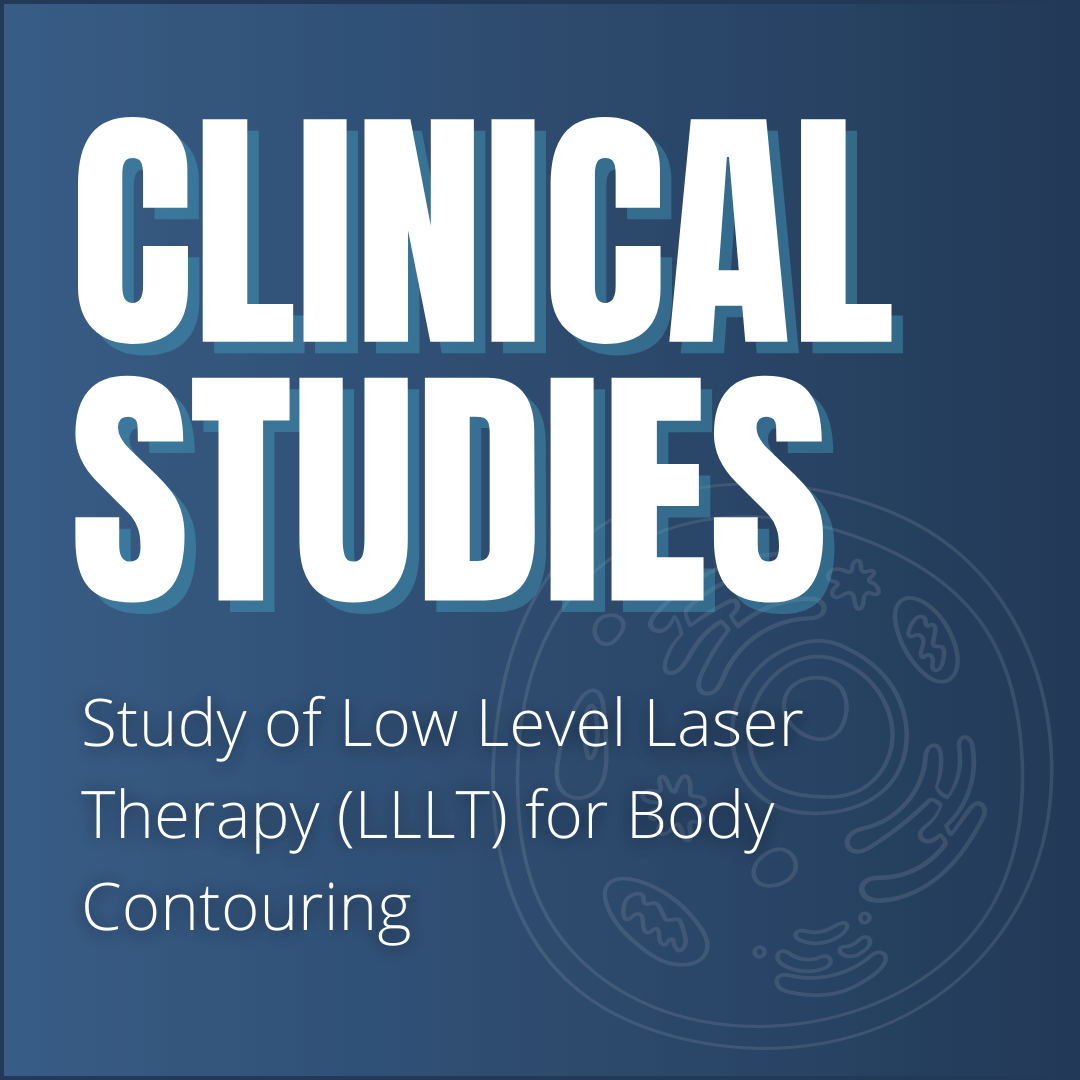
In the area of non-invasive cosmetic treatments, Low Level Laser Therapy (LLLT) has emerged as a groundbreaking method for body contouring.
This innovative approach is making significant strides in the industry, offering individuals a way to reshape and redefine their bodies without the need for invasive procedures.
The popularity of body contouring has surged, and LLLT is at the forefront of this trend, providing a safe and effective solution for those seeking to enhance their physical appearance.

For more than 20 years, laser technologies have played a significant role in understanding how our bodies work and respond to treatments.
Additionally medical and non-medical professionals continue to discover new methods to implement the use of non-invasive laser devices.
Clinical trials led medical professionals to categorize a new class of laser technology, referred to as, Low Level Laser Therapy, or LLLT for short.
In fact, one of the earliest studies that talks about using LLLT for body contouring is called “Low-Level Laser Therapy as a Non-Invasive Approach for Body Contouring: A Randomized, Controlled Study“, was published in December 2009, indicating that LLLT has been used for body contouring for over a decade!
While LLLT has been around for a while and used in many different ways, it’s been helping people with body contouring for quite some time. It’s another great example of how we can use technology to help us look and feel our best.
Low Level Laser Therapy is a non-invasive treatment that uses low-level lasers to target fat cells, effectively helping to reshape the body.
This method is both safe and effective, providing a solution for body contouring without the need for surgical intervention.
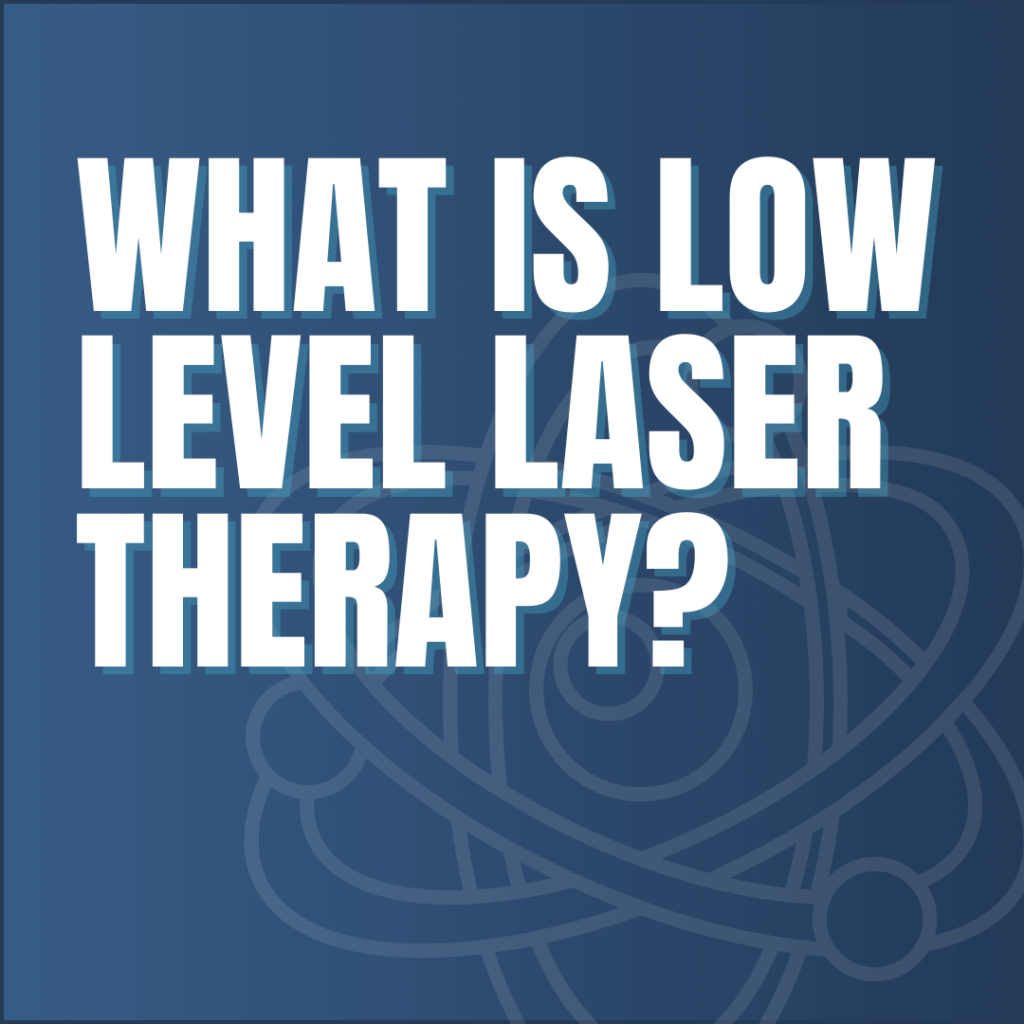
Clinical studies have shown the effectiveness of LLLT in body contouring. A study titled “Non-Invasive Body Contouring with Radiofrequency, Ultrasound, Cryolipolysis, and Low-Level Laser Therapy” discusses the current noninvasive body-contouring modalities, including LLLT. This research further indicates that these technologies are high-interest areas for non-invasive aesthetic alternatives to surgery.
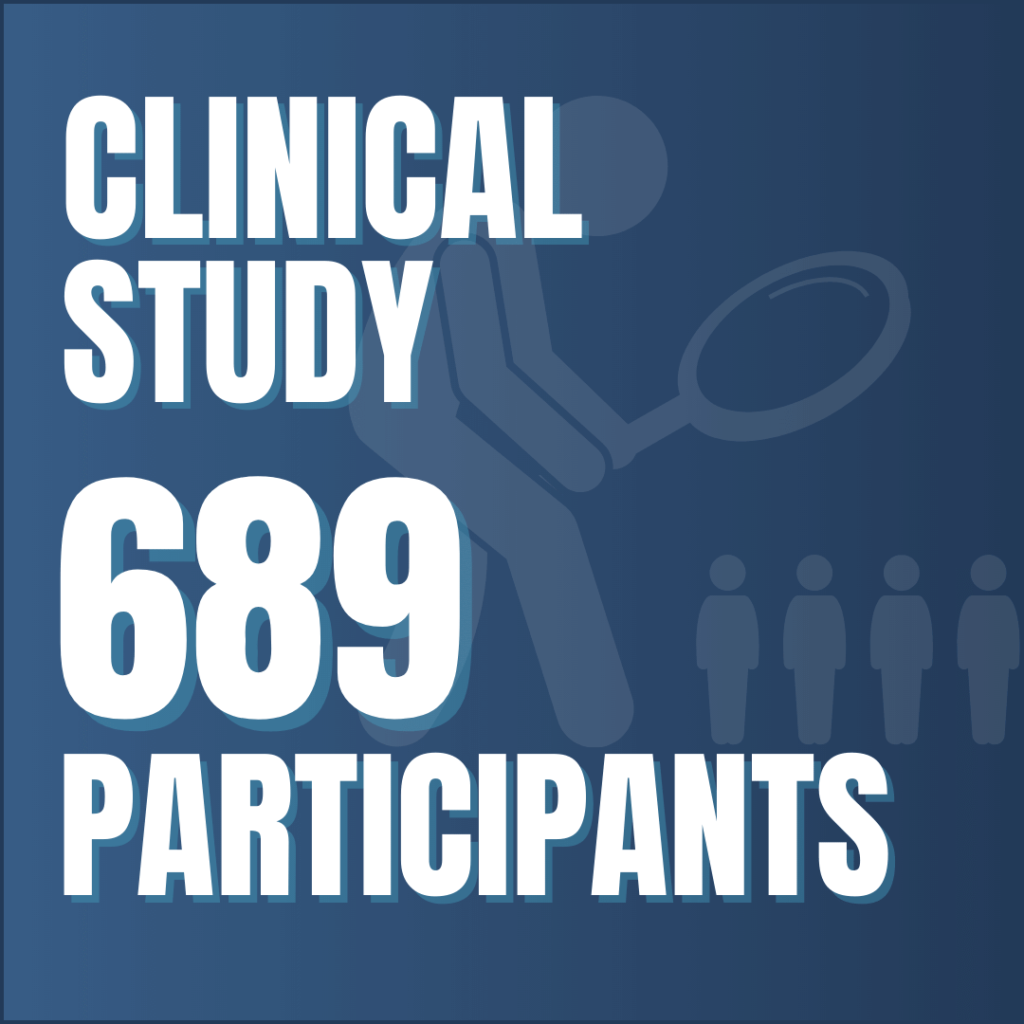
The clinical study titled “Low-Level Laser Therapy (LLLT) for Non-Invasive Body Slimming” involved 689 participants and aimed to evaluate the effectiveness of LLLT in noninvasive body contouring.
The study was designed to determine whether the reduction in body size was due to the actual loss of fat or simply the movement of fluid or fat to other areas of the body.
The participants underwent six LLLT treatments over a period of two weeks, and measurements were taken before and after the treatment regimen. The measurement sites included the waist, hips, thighs, arms, knees, neck, and chest.
The results showed a significant reduction in body size across all measurement points. Specifically, the average reduction in the waist, hips, and thighs was 3.27 inches one week after the treatment regimen. Furthermore, participants demonstrated an overall average reduction of 5.17 inches across all measurement points.
The conclusion of the study was that the reduction in body size following LLLT was not due to fluid or fat relocation, as all measurement points, including those not treated, reported a loss in inches. This suggests that the loss in body size was due to the actual loss of fat.
Based on this summary, the study presents positive results for the use of LLLT in noninvasive body contouring.
The significant reduction in body size across all measurement points, including those not treated, suggests that LLLT is effective in reducing body size.
Further indicating the reduction is due to actual fat loss rather than fluid or fat relocation. Therefore, this study supports the use of LLLT for noninvasive body contouring.
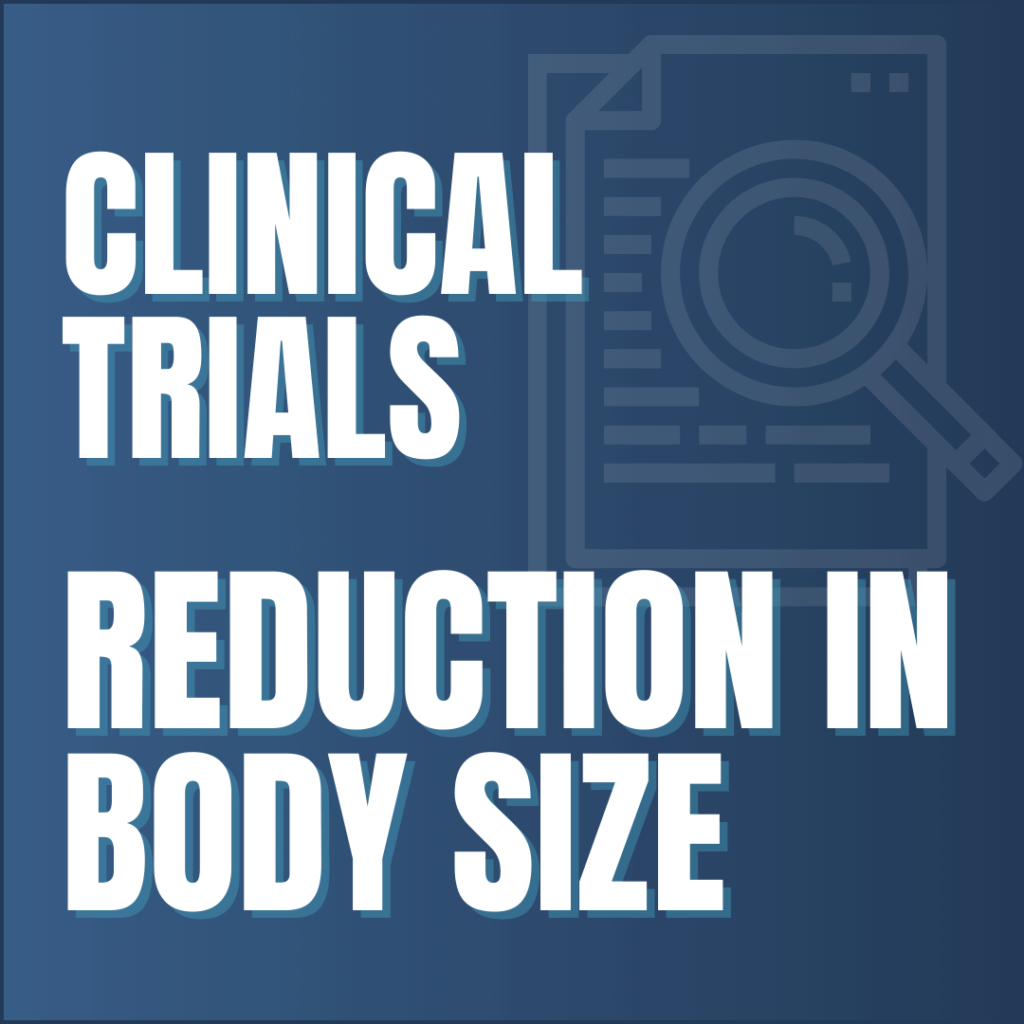
Within minutes of low level laser exposure, fat cells begin to develop transitory pores. The release of the fat cell contents is the result of the disruption of the cell’s membrane. This membrane disruption, called a transitory pore, is the result of low-level laser stimulation.

The below illustrations demonstrate the breakdown of fat cell contents as a result of low level laser therapy.

Filled adipose cells refers to the healthy fat cells in the body that are functioning normally and not causing harm to the body.

Liberated fatty debris is a process where small amounts of fat escape from inside a fat cell and cross the cell's outer boundary, or membrane.

When adipose cells collapse cell walls break down and the stored fat is released and can be absorbed by the body for energy.

The average combined inch loss across all clinical studies was a reduction of at least 6.0 inches in the waist, hip, and thigh circumference.







Ultrasound images provide clear evidence of lipo laser’s effectiveness in diminishing fat layers.
Clinical Trials Using Low Level Lipo Laser Therapies
The research on lipo laser treatment has yielded some fascinating results. Visual evidence supports the effectiveness of lipo laser in reducing fat layers, further emphasizing its potential in non-invasive body contouring procedures.
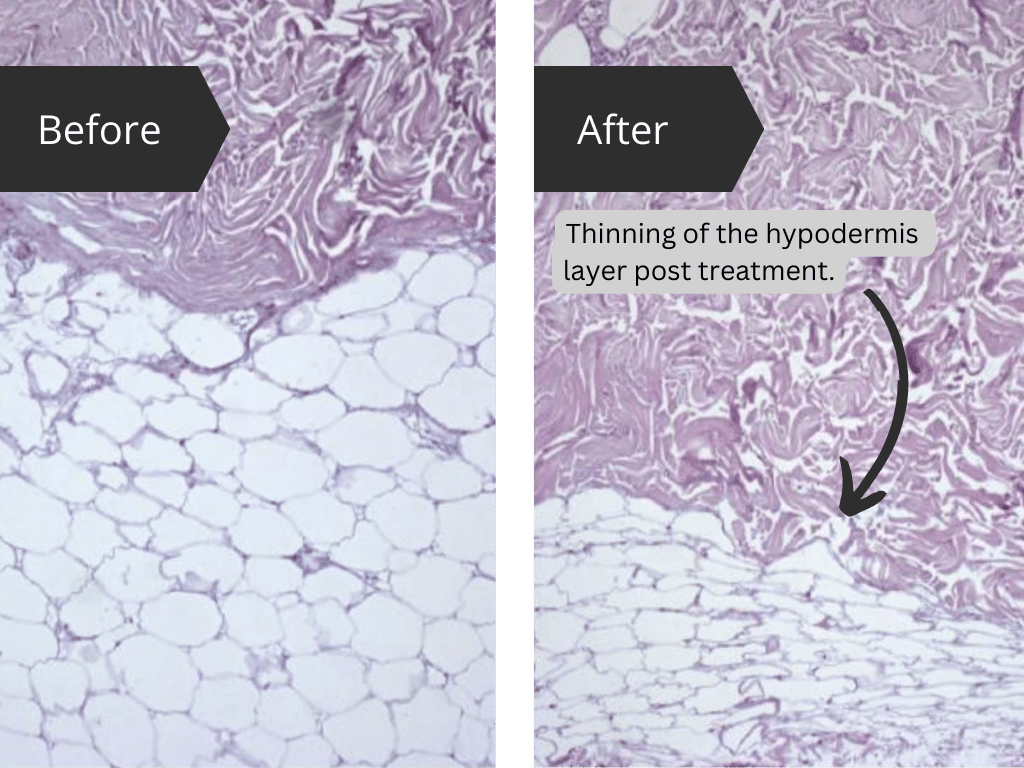





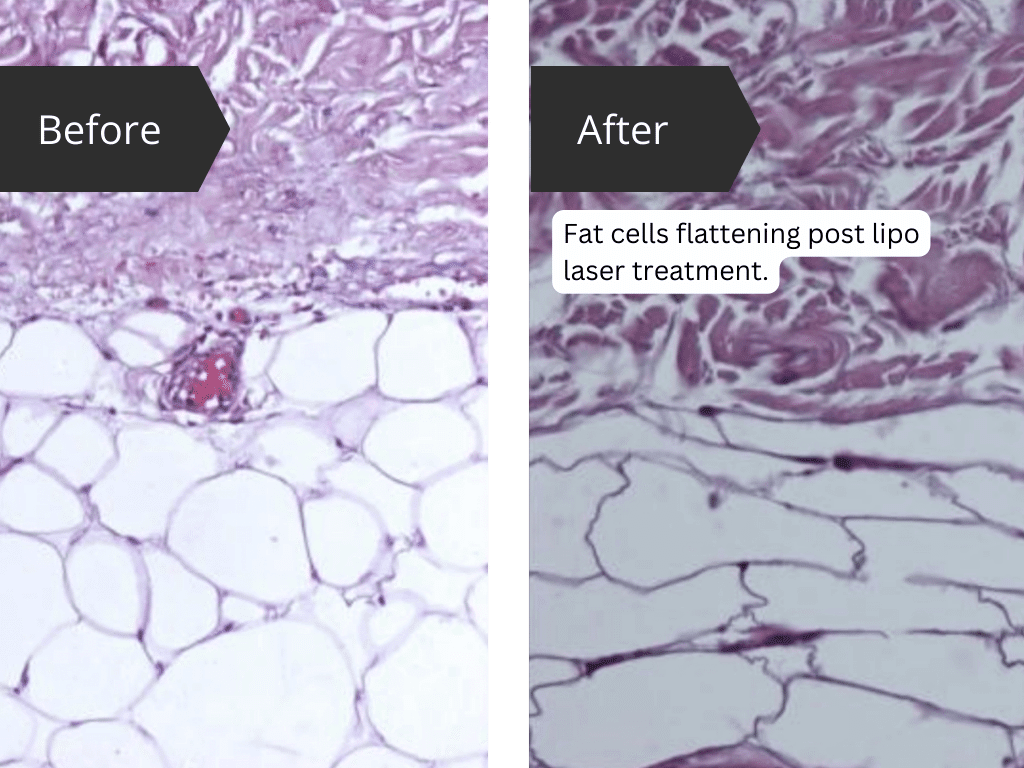
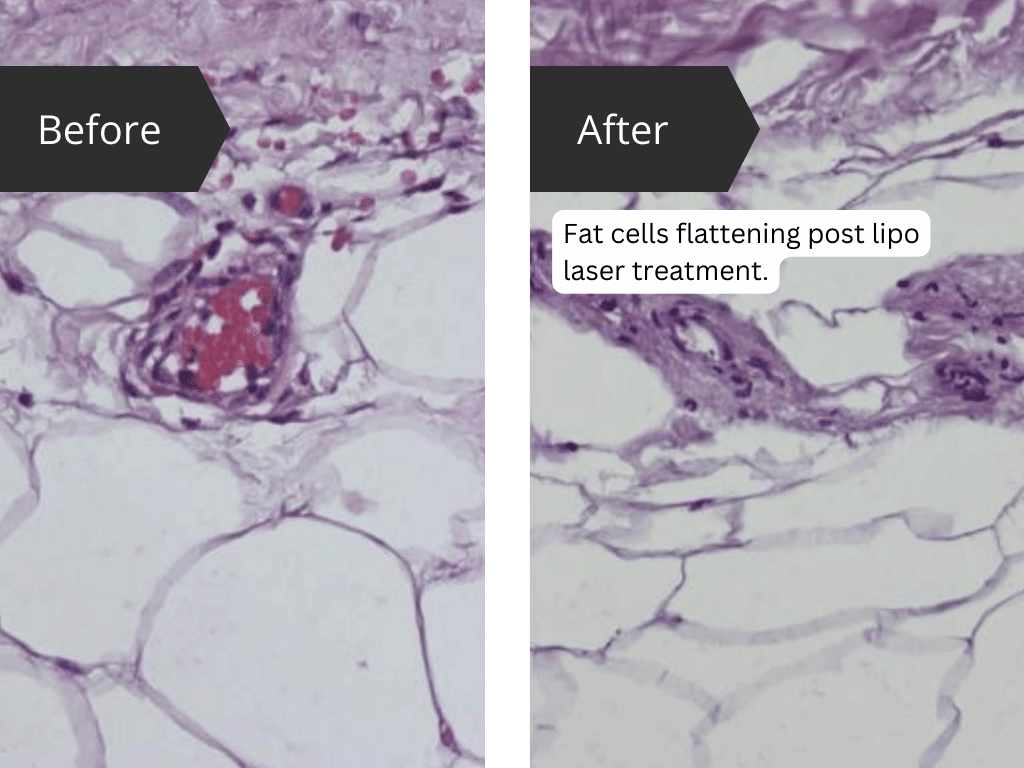
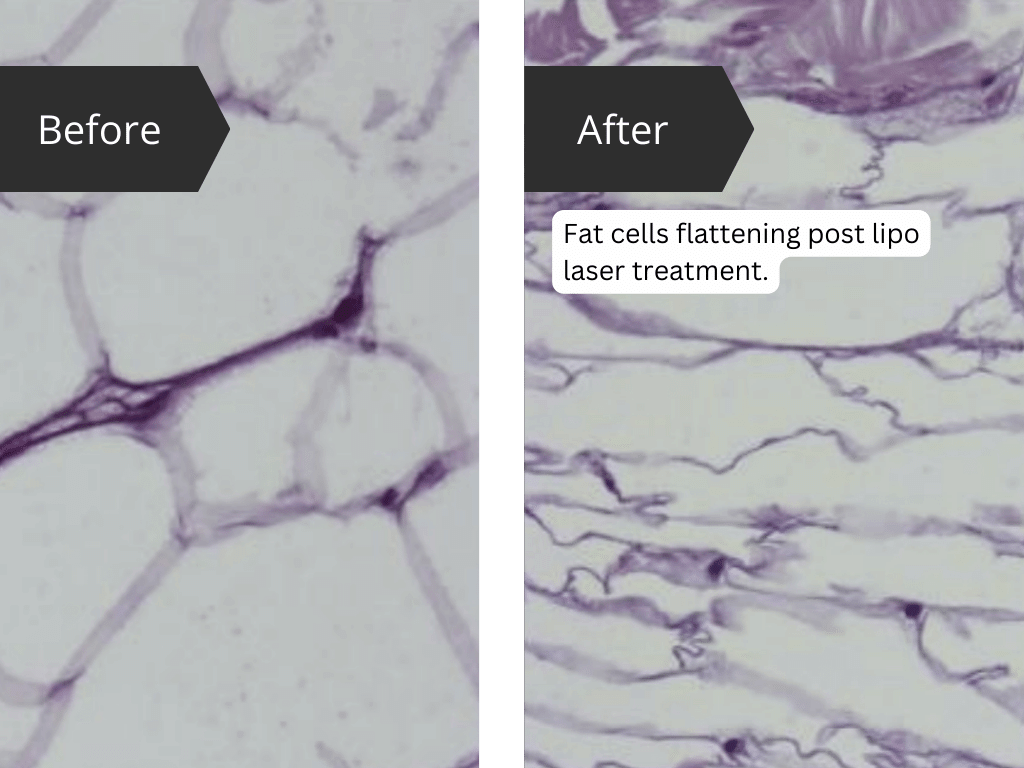
All clinical studies mentioned here are supported by rigorous scientific research. Some of these studies are provided by Bodcor’s device manufacturer, ensuring that the information is directly related to the specific technology used in their devices.
Other studies are sourced from the National Library of Medicine, a reputable and widely recognized institution in the field of medical research. This combination of sources ensures a comprehensive understanding of the effectiveness and safety of Low Level Laser Therapy for body contouring.

Upon completion of 8 to 10 treatments within a span of 3 to 4 weeks, most individuals can anticipate a 25% overall enhancement in body contouring outcomes.
This improvement is quantified by evaluating three key areas:
*Assuming no unforeseen or underlying health conditions were present in patients at the time of the clinical research.
Click below to learn more.
LLLT for body contouring is a non-invasive treatment that uses low-level lasers to target and reduce fat cells, effectively helping to reshape the body.
Non-invasive laser-based devices are tools that use laser technology to perform treatments without needing to make incisions or physically enter the body. In the context of body contouring, these devices are used to target and reduce fat cells.
The 2009 clinical study showed that LLLT was effective in reducing body size, particularly in the waist, hips, and thighs. The reduction was not due to fluid or fat relocation, suggesting that it was due to actual fat loss.
LLLT works by using low-level lasers to target fat cells. The laser energy stimulates the cells, causing them to break down. The body then naturally eliminates these broken-down fat cells.
Clinical studies have shown that LLLT is effective for body contouring. Participants in these studies have seen significant reductions in body size, particularly in the waist, hips, and thighs.
The clinical study involving 689 participants found that LLLT led to a significant reduction in body size. The average reduction in the waist, hips, and thighs was 3.27 inches one week after the treatment regimen.
The study observed a significant reduction in body size. The average reduction in the waist, hips, and thighs was between 3.27 and 5.17 inches one week after the treatment regimen.
The clinical trial showed a significant reduction in body size. The average reduction across all measurement points was between 3.27 and 5.17 inches.
LLLT works by using low-level lasers to stimulate fat cells. This stimulation causes the cells to break down and release their contents, which are then naturally eliminated by the body.
The procedure for LLLT treatment involves applying a device that emits low-level lasers to the targeted area. The device is typically applied for a specific duration, and multiple sessions may be needed for optimal results.
One example of clinical results from LLLT treatment is the study involving 689 participants, which found an average reduction in the waist, hips, and thighs of 3.27 inches one week after the treatment regimen.
The average combined inch loss across all clinical studies was a reduction of at least 6.0 inches in the waist, hip, and thigh circumference.
The amount of fat cell reduction can vary depending on individual factors, but studies have shown significant reductions in body size following a regimen of LLLT treatments.
*Assuming no unforeseen or underlying health conditions were present in patients at the time of the clinical research…
Upon completion of 8 to 10 treatments within a span of 3 to 4 weeks, most individuals can anticipate a 25% overall enhancement in body contouring outcomes. This improvement is quantified by evaluating three key areas:
Ultrasound images provide visual evidence of the reduction in fat layers following LLLT treatment, demonstrating its effectiveness in non-invasive body contouring.
Numerous clinical trials have been conducted over the years, all pointing to similar results. These studies, some dating back to 2009, consistently show the effectiveness of Low Level Laser Therapy (LLLT) for body contouring. The sources of these studies are reputable and include the National Library of Medicine and PubMed, along with information from device manufacturers.
Two notable studies stand out. One from 2009 specifically focused on LLLT for body contouring, and another involved a large group of 689 participants. Both studies reported a significant decrease in body size after a series of LLLT treatments. So, the science is clear: LLLT is a proven method for body contouring.
Thinning of hypodermis layer post treatment refers to the visible reduction in fat layer thickness after a non-invasive Low-Level Laser Therapy (LLLT) treatment for body contouring.
The hypodermis, also known as the subcutaneous layer, is the deepest layer of the skin. It’s primarily composed of fat and connective tissue. In the context of body contouring, LLLT targets this layer to break down fat cells, which are then naturally eliminated from the body.
Clinical trials for LLLT in body contouring often measure the thickness of the hypodermis layer before and after treatment as a way to quantify the effectiveness of the procedure. If the hypodermis layer is noticeably thinner after treatment, it suggests that the LLLT has successfully reduced the amount of fat in the treated area, leading to a more contoured appearance.
This means that the laser treatment has caused the fat cells to change their structure. Fat cells, which are typically round, lose their round appearance and become flattened. This is due to the process of lipolysis, where the laser energy penetrates the skin and is absorbed by the fat cells, causing them to break down and release their stored fat.
This suggests that the fat cells not only release their stored fat but also shrink in size after the treatment. The term “withered” is used to describe the shrunken and depleted state of the fat cells. This change in appearance is also a result of the lipolysis process triggered by the LLLT.
These changes in the fat cells contribute to the overall effect of body contouring, as the reduction in size and number of fat cells can lead to a more sculpted and toned appearance.
Experience non-surgical body contouring. An alternative method
to help with weight loss.
